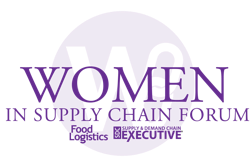
In today's rapidly evolving supply chain landscape, organizations face unprecedented challenges in developing and retaining top talent. Recent global disruptions have exposed critical weaknesses in supply chain resilience, with industry leaders consistently identifying talent shortages as one of their most pressing concerns. As supply chain functions evolve from purely operational to strategic business drivers, with many leaders now directly responsible for customer experience, the need for comprehensive talent development has never been greater.
This evolution demands a new approach to talent development, with mentorship emerging as a powerful tool for building the next generation of supply chain leaders. However, as organizations invest in these programs, a critical question emerges: How do we measure their effectiveness and demonstrate tangible ROI?
The talent challenge in modern supply chains
The supply chain function has transformed dramatically, requiring leaders who can navigate both physical and digital flows while demonstrating cross-functional collaboration skills. According to a recent Mercer study, 50% of executives anticipate they will struggle to meet demand with their current talent model, yet 35% of executives feel confident that they can quickly scale talent needs up and down.
This gap is particularly concerning as supply chains become more complex. Industry experts increasingly recognize that the most underestimated risk today isn't technology or process—it's people. Having the right talent with the capacity to navigate disruption effectively has become the differentiating factor between organizations that thrive and those that merely survive.
Mentorship as a strategic investment
Mentorship programs offer a structured approach to developing supply chain talent, addressing both technical expertise and leadership capabilities. When designed effectively, these programs can:
- Accelerate cross-functional knowledge transfer
- Build enterprise-wide thinking and strategic perspective
- Improve retention of high-potential employees
- Create stronger succession pipelines for leadership roles
- Foster innovation and problem-solving capabilities
However, as with any strategic investment, organizations must demonstrate tangible returns. According to research from the Association for Talent Development, companies with formal mentoring programs report a 50% higher retention rate among mentored employees compared to non-mentored employees. Yet many organizations struggle to quantify the broader impact of these programs on business performance.
Measuring mentorship ROI: Beyond basic metrics
Traditional approaches to measuring mentorship effectiveness often rely on simplistic metrics like participation rates or satisfaction surveys. While these provide some insight, they fail to capture the true business impact of mentorship investments.
A more comprehensive measurement framework should include:
1. Talent development metrics
- Promotion and succession rates: Track the percentage of mentored employees who advance to leadership roles compared to non-mentored peers.
- Skill acquisition: Measure improvements in specific competencies identified as development areas at program outset.
- Cross-functional mobility: Monitor lateral moves that build broader supply chain expertise.
2. Organizational performance indicators
- Retention improvements: Calculate cost savings from reduced turnover among mentored employees. According to Payactiv research, replacing an employee typically costs 50-200% of their annual salary.
- Productivity gains: Measure performance improvements in mentees' departments or teams.
- Innovation metrics: Track new ideas or process improvements generated through mentorship relationships.
3. Business impact measures
- Project ROI: Assign mentees to specific business challenges and measure the financial impact of their solutions.
- Customer experience improvements: Monitor changes in service levels, order fulfillment rates, or customer satisfaction scores in mentees' areas of responsibility.
- Cost reduction: Quantify efficiency improvements or cost savings resulting from mentorship-driven initiatives.
Best practices from leading organizations
Several approaches stand out among organizations successfully measuring mentorship ROI.
Integrated development approach. Leading retailers implement development models that emphasize cross-functional experience, with supply chain leaders gaining exposure to merchandising, operations, and commercial functions. Their success metrics include not just promotion rates but also how effectively leaders influence cross-functional teams and drive business results.
Frontline feedback integration. Some innovative retailers connect frontline associates with supply chain leaders, creating a two-way mentorship that provides real-time, actionable insights. These programs' effectiveness is measured through improvements in inventory accuracy, reduced canceled orders, and enhanced fulfillment speed.
Project-based measurement. Many organizations are adopting a project-based approach to mentorship ROI, where mentees are assigned specific business challenges with measurable outcomes. For example, a 6-month executive leadership program might culminate in participants presenting recommendations to senior leadership, with implementation results tracked over the following year.
Implementation roadmap: Building a measurable mentorship program
For organizations looking to enhance their measurement of mentorship ROI, consider this phased approach:
Phase 1: Program design with measurement in mind
- Define clear objectives aligned with business priorities
- Establish baseline metrics before program launch
- Design mentorship pairings around specific business challenges
- Create a control group of non-mentored employees for comparison
Phase 2: Implementation with continuous feedback
- Conduct regular check-ins with mentors and mentees
- Gather qualitative insights on knowledge transfer and skill development
- Track early indicators of success through project milestones
- Adjust program elements based on initial feedback
Phase 3: Comprehensive evaluation
- Compare performance metrics between mentored employees and control group
- Calculate financial impact through retention improvements and productivity gains
- Document specific business outcomes from mentorship projects
- Prepare executive summary highlighting program ROI
The future of mentorship measurement
As supply chains continue to evolve, so will our approaches to measuring mentorship effectiveness. Advanced analytics and AI tools are enabling more sophisticated tracking of skill development and performance improvements. Organizations at the forefront are exploring predictive models that can forecast the long-term impact of mentorship investments on leadership pipelines and business performance.
The most successful programs will be those that balance quantitative metrics with qualitative insights, recognizing that some of the most valuable outcomes of mentorship—such as improved decision-making, strategic thinking, and cross-functional collaboration—may be challenging to quantify but are nonetheless critical to supply chain excellence.
Mentorship as a strategic imperative for supply chain resilience
In an era where supply chain talent is both increasingly strategic and increasingly scarce, mentorship programs represent a vital investment in organizational resilience. By implementing robust measurement frameworks that connect mentorship activities to business outcomes, supply chain leaders can demonstrate the tangible ROI of these programs while continuously refining their approach to talent development.
The organizations that thrive will be those that view mentorship not as a nice-to-have HR initiative but as a strategic imperative directly linked to supply chain performance and business success. As industry experts increasingly recognize, the future of supply chain isn't just about technology—it's about the integration of people, AI, and decision-making at scale. Mentorship programs, when properly measured and managed, ensure that the human element of this equation remains as strong as the technological one.



![Pros To Know 2026 [color]](https://img.sdcexec.com/mindful/acbm/workspaces/default/uploads/2025/08/prostoknow-2026-color.mduFvhpgMk.png?auto=format%2Ccompress&bg=fff&fill-color=fff&fit=fill&h=100&q=70&w=100)







![Pros To Know 2026 [color]](https://img.sdcexec.com/mindful/acbm/workspaces/default/uploads/2025/08/prostoknow-2026-color.mduFvhpgMk.png?ar=16%3A9&auto=format%2Ccompress&bg=fff&fill-color=fff&fit=fill&h=135&q=70&w=240)








